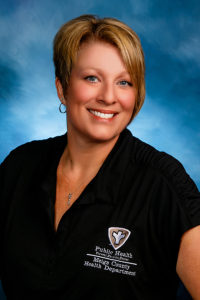The facts about head lice


By Leanne Cunningham, RN, BSN, CLC
Director of Nursing
“YOU HAVE HEAD LICE.” This is one of the most dreaded statements a parent can hear from a health department or school nurse. Infestation with head lice can lead to many missed days of school and is one of the most common causes of student absenteeism. All local school districts in Meigs County having a “no nit” policy.
The head louse is a parasitic insect that can be found on the head, eyebrows, and eyelashes of people. Head lice flourish by feeding on human blood several times a day and live close to the human scalp. Head lice are not known to spread disease.

Director of Nursing
Head lice is a worldwide problem. It is most common among pre-school children attending child care, elementary schoolchildren, and the household members of infested children. Although reliable data on how many people in the United States get head lice each year are not available, an estimated 6 million to 12 million infestations occur each year in the United States among children 3 to 11 years of age (cdc.gov).
Contrary to popular belief, head lice cannot hop or fly; they move by crawling. Most of the time, lice are spread by direct head-to-head contact with the hair of an infested person. Less commonly, it can also be spread by contact with clothing (such as hats, scarves, coats) or other personal items (such as combs, brushes, or towels) used by an infested person. Personal hygiene or cleanliness in the home or school has nothing to do with getting head lice. Also, dogs, cats, and other pets do not play a role in the spread of head lice.
Head lice may be discovered in three different forms: the egg or “nit,” a nymph or newly hatched insect, or an adult. The nits are usually found within ¼” of the scalp and are difficult to remove because they firmly stick to the strand of hair. Nymphs look like adult lice, but are smaller, about the size of a knot in thread. Adult lice are about the size of a sesame seed, have six legs and are tan to grayish-white in color. They move very quickly, especially when light is shone on them. The life cycle of the louse is between 30 – 35 days from egg stage to death as an adult, but between days 19 – 32, the female louse may lay around six eggs per day; thus, with the continuous cycle, it doesn’t take one long to become infested.
According to the CDC, symptoms of head lice infestation include:
• Tickling feeling of something moving in the hair.
• Itching, caused by an allergic reaction to the bites of the head louse.
• Irritability and difficulty sleeping; head lice are most active in the dark.
• Sores on the head caused by scratching. These sores can sometimes become infected with bacteria found on the person’s skin.
Treatment of head lice includes the use of over-the-counter medication that includes permethrin. This medication must be used according to the manufacturer’s instructions or under the guidance of one’s doctor. Nits must be pulled by hand. Lice combs are not reliable to remove all nits, but may be used before one starts pulling by hand.
The following information is from cdc.gov and addresses why treatment for head lice may sometimes fail:
1. Misdiagnosis. The symptoms are not caused by an active head lice infestation.
2. Applying the treatment to hair that has been washed with conditioning shampoo or rinsed with hair conditioner. Conditioners can act as a barrier that keeps the head lice medicine from adhering to the hair shafts; this can reduce the effectiveness of the treatment.
3. Not following carefully the instructions for the treatment that is used. Some examples of this include not applying a second treatment if instructed to do so, or retreating too soon after the first treatment before all the nits are hatched and the newly hatched head lice can be killed. Another reason is retreating too late after new eggs have already been deposited.
4. Resistance of the head lice to the treatment used. The head lice may have become resistant to the treatment. If the treatment used does not kill the head lice, your health care provider and pharmacist can help you be sure the treatment was used correctly and may recommend a completely different product if they think the head lice are resistant to the first treatment.
5. Re-infestation. The person was treated successfully and the lice were eliminated, but then the person becomes infested again by lice spread from another infested person. Sometimes re-shampooing the hair too soon (less than 2 days) after correctly applying and removing permethrin can reduce or eliminate any residual (continued) killing effect on the lice.
If you are not sure if a person has head lice, the diagnosis should be made by their health care provider, local health department, or other person trained to identify live head lice.
The Meigs County Health Department does provide head lice screening for $20 or can bill Medicaid for this service. We do not stock head lice treatment medications. We do have educational resources available for the public by calling 740-992-6626. Information is also available through the CDC at www.cdc.gov.









